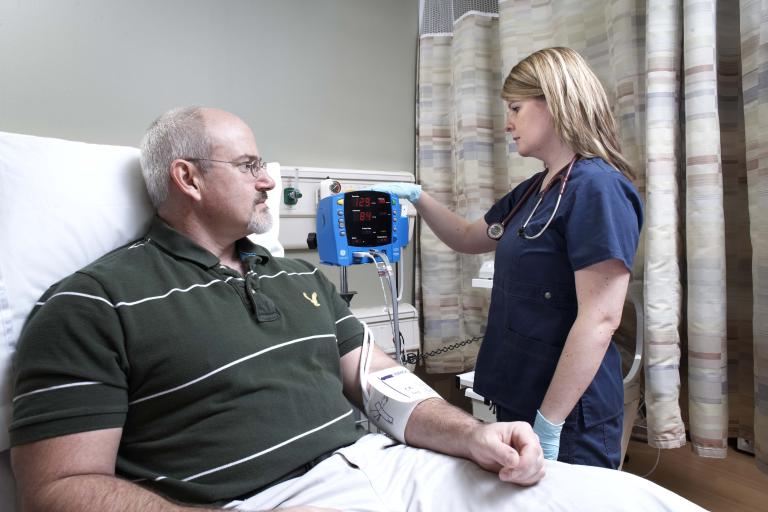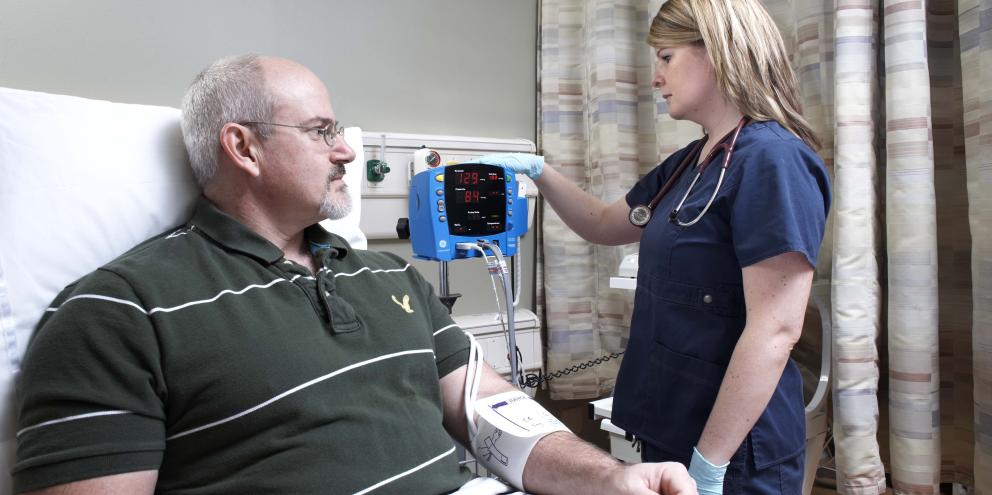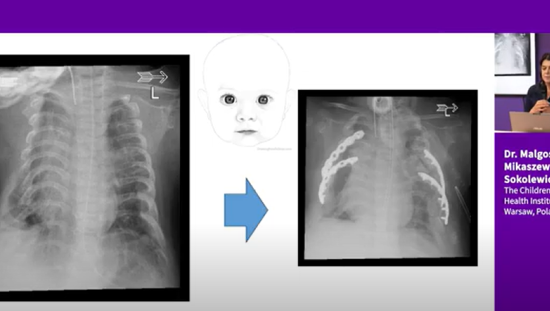
Studies have shown that bacteria such as MRSA can remain on blood pressure cuffs and other environmental surfaces for days, and despite their high usage, cuffs may not be cleaned as frequently as other medical equipment. As such, many healthcare organizations have turned to single-patient-use blood pressure cuffs. However, disposable cuffs contribute to the millions of tons of medical waste produced by healthcare facilities each day. Materials managers, then, have the difficult task of procuring blood pressure cuffs and other single-patient-use consumable products that prioritize patient safety while reducing the impact on the environment.
The environmental impact of blood pressure cuffs
Each staffed hospital bed in the U.S. generates about 33.8 pounds of waste each day, totaling about 6 million tons of waste a year. Plastics make up 20% to 25% of the 14,000 tons of waste U.S. healthcare facilities generate daily.1 Additionally, 91% of plastics are not recycled and sit in landfills when they are disposed of. Disposable blood pressure cuffs are usually made of polyester or vinyl, which aren't biodegradable.
The costs associated with medical waste disposal are staggering, ranging from $760 billion to $935 billion, or 25% of total United States healthcare spending each year.2 Furthermore, doscarding unused medical supplies each year cost each hospital roughly $100,000, and incorrect waste disposal results in hauling costs and fines that add up to about $10,000 each month.3
Not only that, but blood pressure cuffs produced by some manufacturers may contain harmful materials like BPA and DEHP. These materials can leach into the environment when they are disposed of in a landfill. This can be especially dangerous as long-term exposure to DEHP may increase the risk of cancer or birth defects.4 Blood pressure cuffs may also contain latex, which can cause allergic reactions in some patients.
Although reusable blood pressure cuffs can help reduce waste since they are used more than once, they require more resources to clean and sterilize between patients. Studies have also shown that pathogens can be cultured from blood pressure cuffs even after they've been disinfected. Although blood pressure cuff contamination is highest in ICUs,5,6,7 high levels have been demonstrated in all hospital units.
Do single-use cuffs increase patient safety?
Materials managers must weigh the environmental impact of all single-patient-use consumables, including blood pressure cuffs, against their benefits to patients. Reusable blood pressure cuffs can be a source of bacterial contamination that leads to hospital-acquired infections (HAI).5,6,7 Infections can significantly increase the length of a hospital stay and mortality rates. HAIs are one of the most common complications of hospital care in the U.S. The Centers for Disease Control and Prevention (CDC) previously estimated that Americans contract 1.7 million infections while in the hospital every year. Infections are associated with about 99,000 deaths annually, as well as $30 billion in additional healthcare costs.8
Striking a balance
So, how do materials managers balance reducing the environmental impact of disposable devices like single-patient-use blood pressure cuffs while also increasing patient safety? First, the onus is on manufacturers to produce environmentally friendly and patient-focused blood pressure cuffs. This includes producing cuffs that use less material to reduce waste. Less waste also decreases the amount of budget needed to cover disposal costs.
When comparing different blood pressure cuffs, materials managers should consider factors such as patient comfort, proper cuff sizing, and impact on clinician workflow. This requires a diverse portfolio, as not all blood pressure cuffs are created equal. Standard blood pressure cuffs are not effective for certain patient populations, such as those who are overly muscular or obese. Using the wrong size cuff can lead to inaccurate measurements that can miss life-threatening illnesses like hypertension and hypotension.
The right blood pressure cuff should also increase workflow efficiencies, whether that means making it easier for clinicians to select the right size cuff or enabling inventory optimization. Cuff standardization may also reduce the risk of improper connections to other types of medical equipment.
With these features in mind, materials managers may want to consider a single patient use cuff like GE HealthCare ONE-CUF to their facility. As a single patient-use cuff for pediatric and adult patient populations, ONE-CUF is not made with DEHP or natural rubber latex for patient safety reasons.
ONE-CUF is rigorously tested for performance to help clinicians make well-informed decisions. It is available in DINACLICK and Bayonet connectors and is compatible with GE HealthCare and non-GE HealthCare automatic and manual blood pressure devices to enable cuff standardization. ONE-CUF is also designed with 40% less fabric and 45% less PVC than the leading disposable cuff to reduce waste and lessen the impact on the environment.
The best of both worlds
Despite their unassuming nature, blood pressure cuffs play a critical role in healthcare and can have a significant impact on the patient experience and the environment. Typical single-use blood pressure cuffs can contribute heavily to medical equipment waste, making it crucial for healthcare facilities to explore sustainable alternatives. On the other hand, reusable cuffs can increase the risk of hospital-acquired infections, negatively affecting patient outcomes. The right blood pressure cuff should effectively mitigate both of these risks and enable clinicians to focus on delivering high-quality care.
Resources:
1. Navami J, LaBeaud D. How should US health care lead global change in plastic waste disposal? AMA Journal of Ethics. October 1, 2022. https://journalofethics.ama-assn.org/article/how-should-us-health-care-lead-global-change-plastic-waste-disposal/2022-10#. Accessed May 11, 2023.
2. Hughes, D. L., & Meadows, P. D. (2020). Reducing Medical Waste to Improve Equity in Care. American journal of public health, 110(12), 1749–1750. https://doi.org/10.2105/AJPH.2020.305962
3. "The High Cost of Poor Waste Management in Healthcare." Zabble Blog, 2021. https://www.zabbleinc.com/blog-post/the-high-cost-of-poor-waste-management-in-healthcare#:~:text=We%20learned%20that%20discarding%20unused,at%20around%20%2410%2C000%20per%20month.
4. Di(2-ethylhexyl)phthalate (DEHP). Proposition 65. https://www.p65warnings.ca.gov/fact-sheets/di2-ethylhexylphthalate-dehp#:~:text=DEHP%20is%20on%20the%20Proposition,the%20development%20of%20the%20child. Accessed May 7, 2023.
5. Baruah J., et al. Blood pressure cuffs as a potential fomite for transmission of pathogenic micro-organisms: A prospective study in a university teaching hospital. British Journal of Infection Control, 9; 1, 19-21 (2008).
6. Stone P.W. Systematic review of economic analyses of health care-associated infections. American Journal of Infection Control 33 (9), 504 (2005).
7. Beggs C.B., et al. Increasing the frequency of hand washing by healthcare workers does not lead to commensurate reductions in staphylococcal infection in a hospital ward BMC Infectious Diseases, 8:114 (2008). [Online] http://www.biomedcentral.com/1471-2334/8/114. Accessed 24 March 2009.
8. CDC to distribute $40 million in Recovery Act funding to help states fight healthcare-associated infections. Centers for Disease Control and Prevention. https://www.cdc.gov/media/pressrel/2009/r090901.htm. Accessed May 7, 2023.






